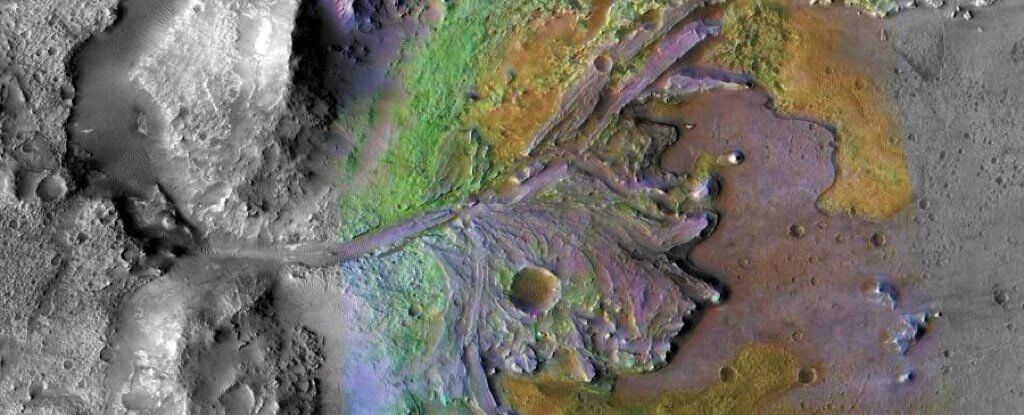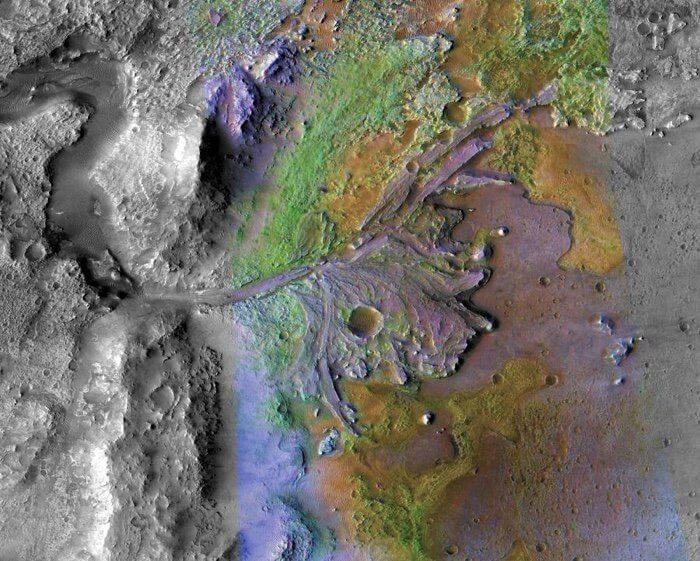
An international group of scientists, conducted a comprehensive analysis of the surface of Mars, he found the place of greatest interest with astrometeorological point of view in the framework of future missions to the Red planet. This place is the former lake, which contains a sedimentary rock, rich in iron and silicon. According to researchers, this breed was formed from compacted mud and clay, which increases the likelihood of preservation of microbes.
“Mars has many interesting rocks and minerals, where we would like to do a search for the remains of microscopic life. But since we can’t send Rovers to all the places we have tried to select the most promising deposits of rocks, based on available information,” explains astrobiologist at the University of Edinburgh (Scotland), Sean McMahon.
Narrowing the search – not such a bad idea, experts say. For example, despite the fact that the same Curiosity Rover space Agency NASA is on the red planet already more than 2100 days, the machine has covered only 18 kilometers of the surface of Mars. The new Rover, which will be sent to the Red planet in 2020, will have a far more increased autonomy and agility, so the selection of the most interesting targets to study in advance can increase our chances of discovery of what we all long for – life on another planet.

Dried up Delta of the river, the surrounding Martian crater, Jezero
After extensive review of scientific data, McMahon and his team have selected the most interesting options. This information is gained through three sources. First — stratigraphic, mineralogical and geochemical data collected during previous missions, the second is the analysis of similar fossils on Earth, and the third is the experimental study of organic decay and preservation.
Scientists believe that the age of the fossils may be four billion years. This is a very long time, but on Mars, unlike Earth, there is the movement of tectonic plates, which often destroys the remains. The information obtained will be useful for the next missions to the red planet.
Astrobiologists have selected the most interesting place to search for life on Mars
Nikolai Khizhnyak